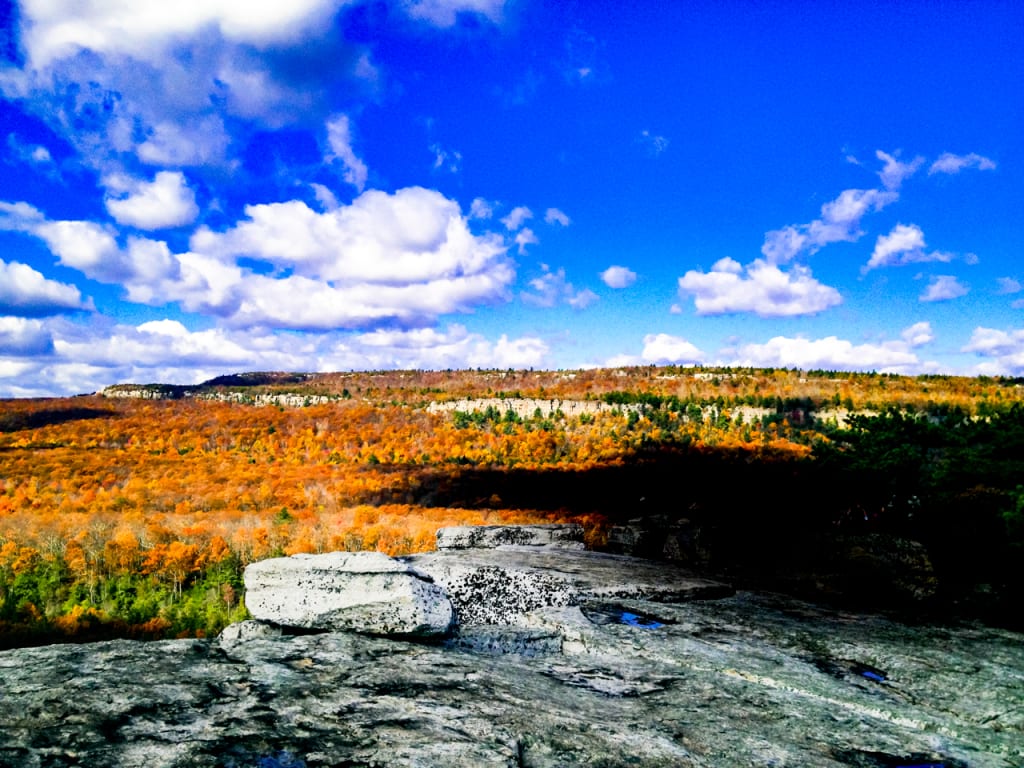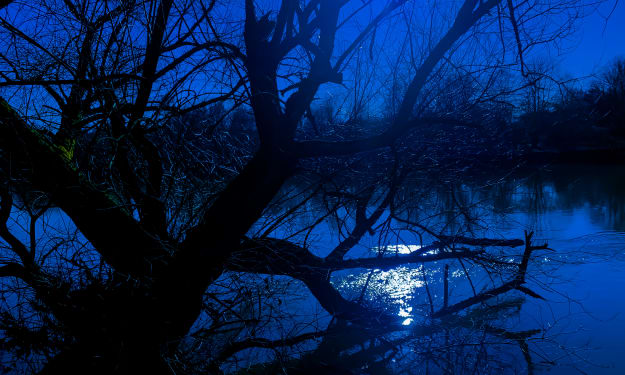Boost Autumn Colors
With a magic filter made of Didymium

Brilliant reds and yellows pop from these images because of the use of a rare-earth filter. Didymium filters.
Didymium (Greek: δίδυμο, twin element) is a mixture of the elements praseodymium and neodymium. It is used in safety glasses for glassblowing and blacksmithing, especially with a gas (propane)-powered forge, where it provides a filter that selectively blocks the yellowish light at 589 nm emitted by the hot sodium in the glass without having a detrimental effect on general vision, unlike dark welder's glasses. The usefulness of didymium glass for eye protection of this sort was discovered by Sir William Crookes.
Didymium photographic filters are often used to enhance autumn scenery by making leaves appear more vibrant. It does this by removing part of the orange region of the color spectrum, acting as an optical band-stop filter. Unfiltered, this group of colors tends to make certain elements of a picture appear "muddy". These photographic filters are also used by nightscape photographers, as they absorb part of the light pollution caused by sodium street lights. Didymium was also used in the sodium vapor process for matte work due to its ability to absorb the yellow color produced by its eponymous sodium lighting. ~Wikipedia
Jim DeLillo has announced today that he has added new images using this technique to his 'Autumn' gallery at
http://jim-delillo.artistwebsites.com/
These images were recently taken in New Jersey and enhanced using the special on-camera filter to further saturate and beautify the colors of the fall foliage.
An image intensifier
The filter is made from Didymium, a mixture of the rare-earth elements praseodymium and neodymium. Filters made from the material selectively block colors while letting other parts of the spectrum through.


Blue skies will always benefit from a polarizing filter.
Post-processing
Of course, even with or without a filter, image colors can be intensifed in post-processing using an image editing software such as LightRoom.
Using LightRoom, I recommend getting the exposure and contrast set to your liking and then carefully increasing saturation, vibrance, and clarity. Fix the color balance, and then lastly apply noise reduction. While LightRoom NR does an okay job, you will find that Topaz DeNoise AI gives much more pleasing results.
Other products like Topaz Photo AI can be used to sharpen, remove noise, and increase the resolution of your photos.
Many landscape photographers consider autumn to be their favorite season for shooting because there are so many options. The rapidly altering light and conditions provide many difficulties, and it doesn't take many errors before you have to wait a whole year before trying again.
But as we all know, a little struggle can lead to big gains. You can get pictures you can't wait to show the world by taking your time when setting up the shot and playing with the composition and viewpoint.
Think of other ways to improve your autumn photos.
Composition is number one. Just shooting a bunch of colorful trees may showcase the color, but if you include an interesting foreground object of another subject of focus, your image can tell a story. The same rule applies to sunset photos or Milky Way photography.
Shoot at the right time of day.
- Blue Hour appears one hour before sunrise and one hour after sunset
- Golden Hour occurs one-half hour after sunrise and one-half hour before sunset.
Look for reflections
- Autumn pictures in a smooth mirror-like lake create a sense of continuation of color.
- Shots taken on a wavy lake can turn the trees into abstract art, especially if cropping out all other clues from the surrounding edges of the frame.
Use a slow shutter speed
A windy day, a tripod, and the leaves rustling in the breeze create photos with a sense of motion and abstract color, especially when combined with a static foreground object.
Prints of Jim DeLillo's photographs are available
Be sure to read Jim Delillo's other featured stories on Vocal
You can write for Vocal, too– Join Here
About the Creator
Jim DeLillo
Jim DeLillo writes about tech, science, and travel. He is also an adventure photographer specializing in transporting imagery and descriptive narrative.






Comments
There are no comments for this story
Be the first to respond and start the conversation.